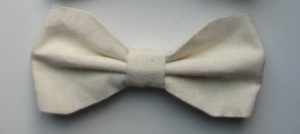Hello everyone and good Fashion Revolution week 2020!

What is Fashion Revolution?
In 2013, the Dhaka garment factory in Bangladesh collapsed. Cracks on the walls of the building had been found prior to the collapsing. However, the garment workers working in this building were told to continue their work even though the building was clearly unsafe. During a rush-hour, the building collapsed. 1,134 were found dead and around 2,500 were injured.
This devastating disaster did not go unnoticed. It caught the attention of people and organizations worldwide. People started to demand a change. There were protests against fast fashion around the world. International pressure to change the industry and labour laws increased.
The general public started to realize what kind of problems surround the fashion industry, such as pollution, inhumane and unsafe working conditions and poverty of the workforce. Fashion Revolution came into being as a response to the factory collapse. Fashion Revolution campaigns for a fashion industry reform. The focus is on getting transparency into the fashion supply chain. Transparency is much needed. As consumers, we have the right to know where and how our clothes are made. If we know the problems, we can make a change.

Unsustainable materials – a problem
The world of fashion is full of problems. There is no denying that. Fashion has a huge impact on the environment. One kilogram of cotton needs thousands of liters of water. Polyester is basically plastic, and plastic-based materials release microplastics every time the materials are washed. Most of the materials require heavy chemical processing in order to become thread. Also, one of the oldest and best materials, wool, can cause harm. If sheep are mistreated in order to get wool, they will become sick and suffer. Same goes for other animals whose fur can be used in clothes. We, the consumers, do not see these processes. They are usually hidden from us.
The production of wool is interesting in itself. Wool is produced in Finland, often as a by-product of meat production. However, around half of the wool produced in Finland will become waste. The prices paid for raw wool are so low that they seldomly cover the costs of shearing or other expenses. Thus, it is easier to the producers to just throw the wool away. At the same time low-cost wool is imported from abroad to cover the demand. Do we really need the cheapest wool? Or could we pay a little bit more to the local producers?
So here we are, faced with a major problem. Human beings need clothes. Clothes protect us from the weather. Clothes also give us a way to be ourselves. In order to have clothes, we need materials but most of those materials are problematic. The production often pollutes the nature and may harm both animals and workforce. On the other hand, materials are imported even though we could produce a lot locally.
Solving the problem – what has been done so far?
It can be depressing to think about all these problems. Luckily, change is already on its way. For example, in Finland, there are multiple companies trying to solve the problem of unsustainable materials. Mostly, the aim is to cut down the use of harmful chemicals.
Spinnova is one of the companies trying to transform the industry and the materials used in garments. Spinnova is developing new technology for transforming pulp into textile fiber. According to Spinnova, this new way of processing does not require any harmful chemicals and it uses 99% less water than the production of cotton. The new fiber feels like cotton or linen. With the new technology, agricultural waste containing cellulose is suitable as raw material. Thus, changing fashion may reduce waste also in other industries. Spinnova and Fortum made a leap into the future of fashion in late 2019: they made garments out of wheat straw. I was surprised by this. I knew that you could make brilliant fabric from stinging nettle. Fabric made from stinging nettle is soft, light and feels good against the skin. It also has many other good qualities. Never had I thought that wheat straw could be used as the base of fabric. So, what else could we use as raw material?
Interesting are also Infinite Fiber and Ioncell. Both are developing ways to turn textile waste into new fiber. These methods replace harmful chemicals used in the processing of raw material with more sustainable options. Infinite Fiber method can also turn recycled cardboard, wood-based pulp, and agricultural pulp into textile fiber. Ioncell can do the same with wood, recycled paper, and cardboard. Ioncell fiber becomes even more interesting when you hear about its qualities: it looks silky, is very strong, easy to dye and use. Amazingly, it is also biodegradable! So again, when developing and trying new methods we can make waste into something new. Sustainable, eh? Development brings us sustainability. It also brings us new, strong, and versatile fabrics.
There is still a lot of work to be done. It will take a lot of time, effort, and campaigning to change the core of the fashion industry. The demand for change has already had an effect, though. These projects to develop new fibers prove that change is already on its way. We, the consumers, and people working in fashion, have the power to ask and demand change. We need to think about where we buy our clothes from, what materials they are made of, how the garments were made, and do we really need new clothes every few weeks. Asking for more sustainable practices will send the fashion industry a message that people want it to change its values.
I only wish that I can soon easily shop fabrics made sustainably from wheat straw, cardboard, or stinging nettle. Here are a few links for you if you wish to read more about the development of sustainable materials:
https://www.storaenso.com/fi-fi/products/market-pulp/dissolving-pulp-for-textiles-and-other-applications (in Finnish)
https://metsaspring.com/fi/project/tekstiilikuitua-paperisellusta/ (in Finnish)
Paula Aromäki
The writer is a tailor who studies social sciences
